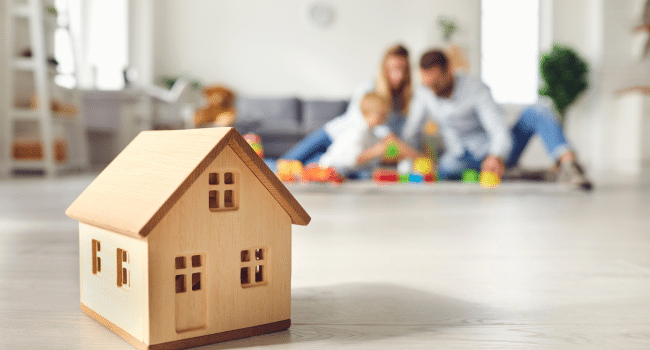Table of Contents
A home isn’t just a place to live—it’s a space that evolves alongside your family’s needs. From welcoming a newborn to raising active kids and later adapting to a quieter household, your home should be flexible enough to support every stage of life. The key to long-term functionality is designing a space that is adaptable, durable, and timeless.
Whether you’re planning for the future or making adjustments to your current home, here’s how to create a space that grows with your family.
1. Design Flexible Spaces
The way you use your home today may not be the way you use it in five or ten years. A nursery will eventually need to transition into a child’s room, and an open play area might later serve as a home office or guest bedroom.
How to Make Your Spaces Adaptable:
- Choose multi-functional furniture, such as a crib that converts into a toddler bed or a dining table with extendable leaves.
- Use modular shelving and storage that can be reconfigured as needs change.
- Designate multi-purpose rooms instead of single-use spaces—consider a guest room that doubles as a home office or a playroom that converts into a study space.
By planning for flexibility, you’ll avoid costly renovations down the road.
2. Choose Family-Friendly Decor That Can Evolve
Your home’s decor should reflect your personality while being practical for a growing family. Opt for timeless elements that can be easily updated rather than decor that feels too age-specific.
How to Decorate for Longevity:
- Keep walls neutral and add personality through changeable accents like pillows, rugs, and artwork.
- Opt for versatile furniture that can transition from a child-friendly space to an adult space.
- Use interchangeable decor—for example, a gallery wall that can be updated with family photos over the years.
Adding stylish area rugs for your home is an easy way to refresh a room’s look while providing comfort and warmth. A high-quality rug can define a space, reduce noise, and even protect flooring from heavy foot traffic.
3. Create Spaces That Support Your Lifestyle
As your family grows, so do your daily routines and lifestyle needs. Whether it’s carving out a homework station, setting up a cozy reading nook, or creating an outdoor play area, your home should work for you.
Consider These Functional Spaces:
- A drop zone near the entrance for shoes, backpacks, and keys to keep everything organized.
- A dedicated workspace for remote work, school projects, or creative hobbies.
- A family-friendly dining area with ample seating for meals, gatherings, and game nights.
- An outdoor living space that evolves from a play area for young kids to a relaxing patio as they grow older.
By designing spaces that cater to your family’s needs, your home will always feel like a comfortable and functional retreat.
4. Keep Safety in Mind
Every stage of family life comes with different safety concerns. A home that’s safe for toddlers may require different precautions than one suited for teenagers or elderly family members.
Safety Considerations for a Growing Family:
- Babyproofing: Install safety gates, secure furniture to walls, and use cordless window treatments.
- Kid-Friendly Spaces: Opt for rounded furniture edges and slip-resistant rugs in high-traffic areas.
- Aging-in-Place Design: Consider wider doorways, non-slip flooring, and accessible lighting for long-term use.
By making thoughtful safety adjustments, your home can remain both functional and secure at every stage.
The Last Word
A home that grows with your family is one that balances flexibility, durability, and timeless design. By investing in adaptable spaces, smart storage solutions, and family-friendly decor, you’ll create a living environment that remains practical and stylish for years to come.
No matter how your needs change over time, your home should always feel like a place of comfort, connection, and growth.
